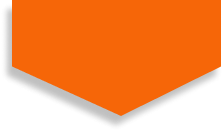Web Design And Development
Packages
We are the best Indian Digital Marketing services agency company located in Chennai, as digital marketing is
undeniably the must-needed aspect for a business today as every customer has their digital presence on the
internet where they search google for information; it is hard to imagine growing a company without having Digital
Marketing strategies.
Web Design and Development Packages
Our web development services build Your website is more than just a collection of pretty images and well-worded keyword filler. It’s your online presence, the hub of your digital existence, the very storefront of the future. If you’re going to be online, then you need a proper website – one built by professionals who are passionate about what they do, and offer you comprehensive web design packages prices in India that leave nothing out.
Frequently Asked Questions (FAQ)
Voice search has become increasingly popular in recent years. An estimated 50% of searches are done using voice search, which equals to about 20,000 searches every second. Optimizing for voice search allows brands to drive more traffic and improve overall user experience.
The most important strategy when optimizing for voice search is ensuring all website content is structured properly and readily available. This includes using conversational language, FAQs, long-tail keywords and phrases. Including these types of voice search-friendly content makes it easier for search engines to parse through your website and show it in search results.
Voice search allows users to search the Internet through spoken voice commands. The function is available on desktops or mobile devices, as well as virtual assistant devices, such as Amazon Echo or Google Home. For each voice search query, the voice assistant will use information from the Featured Snippet to answer the user’s question.
Site migration occurs when a website undergoes substantial changes that could potentially affect SEO. This normally occurs when a business is rebranding, moving from one domain to another, migrating from HTTP to HTTPS, or replatforming. To reduce migration risks, brands should always start small, plan ahead, test, monitor traffic, resolve any content issues, manage sitemaps, and most importantly, keep control of the old domain.
To be eligible for rich results in Google Search, websites must follow the structured data guidelines set by Google. Structured data must be coded using one of the three different supported formats: JSON-LD, Microdata, and RDFa. The content of the structured data must be relevant, original, complete, and can not be spam.
Structured data is a standardized way of providing information about a page that allows search engines to better understand the content of the page. Using structured data on your website will enable special search result features, such as Carousels, Courses, Events, FAQs, Images, and other rich results.
An image map is commonly used on websites for navigation. The image would feature clickable areas that linked to a different destination. These maps are mainly used when the information is easier to convey using visually over textual content. Despite their popularity in the past, image maps should no longer be used in web design. Not only are image maps unnecessarily complicated, they can slow page load times and confuse users.
Technical SEO refers to improving technical elements in an effort to improve search engine rankings. This includes server connection, responsive design, fast site speed, security, redirects, and site architecture. Focusing on these on-page elements will help improve how well search engines can crawl your website to index content.
The best way to learn about your audience is through social media engagement. Pay attention to the posts that receive the most comments, likes, and shares. These insights will show you the topics and messages that users value. By using similar topics and verbiage, companies can create content that website users will be interested in. Surveys also provide a straightforward way to understand your target demographics by learning about your current audience. Companies can embed the survey into the website itself, or ask questions through emails and social media posts.
Anchor text is the clickable text on a webpage that links to another webpage or initiates a file download. Anchor text is typically signified on the page by a different font or text color, and will become underlined when hovered over. The text itself should be chosen carefully – it should tell users exactly what to expect before they click on the link.
Yes! Search engines can not read textual content within images, but it can read image titles. This means your blog post can appear on the image search results page – if your images are titled properly. Try matching the image title to the topic of the blog post. You can even use the blog title as the image title to ensure relevancy and boost image SEO.
For starters, it is always better to use actual text for blog titles, instead of images or graphics. Since search engines can not read the text on an image, your blog will not reap the SEO benefits of the title. Keywords and phrases should be placed at the beginning of the blog title to ensure it appears on the results page. Search engines normally cut titles off after 60 characters on the SERPs.
Blog titles play an important role in SEO. Search engines prefer to rank blog posts that prove relevant to users. That is why the best way to choose a blog title is to think like a search engine user. What would they search to get the information you provide in your blog? If your blog title matches what users are searching for, your post is more likely to rank, and rank highly.
A landing page is the webpage a visitor ends up at after clicking on a link in an email, social media post, ad, or any other marketing platform. The page is meant to convert leads into customers. In order to accomplish this, your landing page must include dynamic design trends, such as animations, illustrations, and other interactive elements. These elements keep users engaged and interested longer than a static landing page, which will encourage conversions.
White space refers to the unused space surrounding elements on a website. The space is used to frame or separate objects and give designs more structure. The space is commonly white, hence the name, but it can be any solid background color. The empty areas can be found between visuals, in margins, between text, and any other blank areas between design elements.
User-generated content is important for the very reason testimonials and reviews are important. Consumers tend to trust the opinions of other consumers compared to content created by brands themselves. User-generated content is one-of-a-kind content that can not be manufactured or replicated. It allows brands to engage with users and reach a wider audience.
User-generated content is exactly that – any content that has been created by a user and posted to social media or other online platforms. This includes text, photos, videos, reviews, and audio content that features a brand’s product or service.
The answer is simple: WordPress. For starters, WordPress makes it easy to customize and update your website. There are thousands of different themes and plugins to choose from, which means you can turn the website you have always wanted into a reality. Once you create content, you want to share it with your audience as soon as possible. WordPress’s intuitive editor allows businesses to easily format and publish content.



